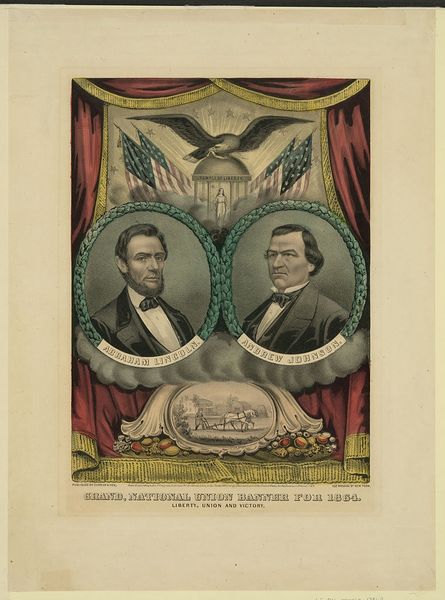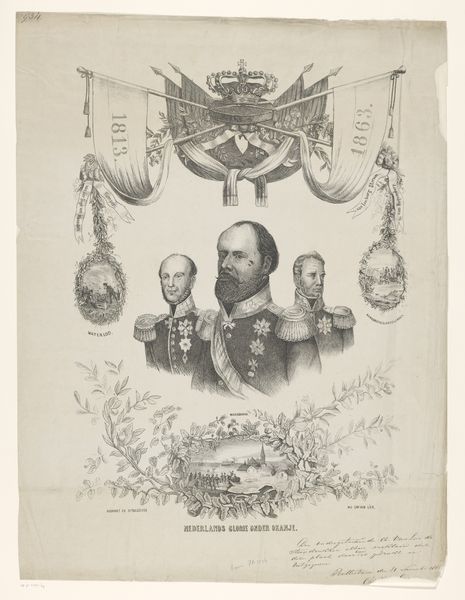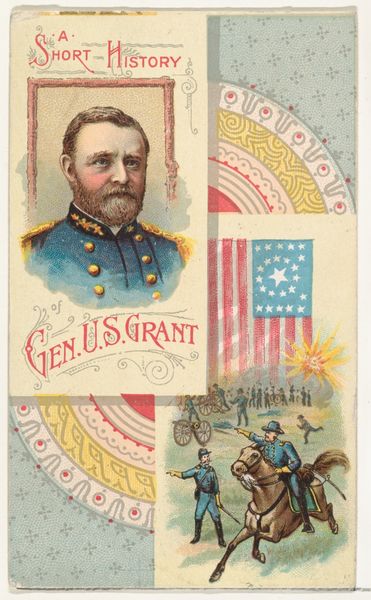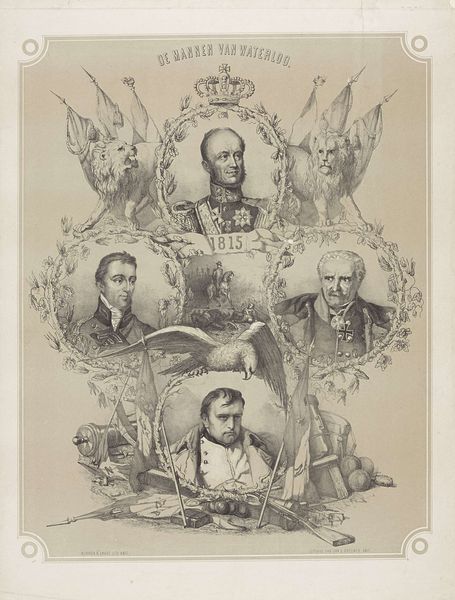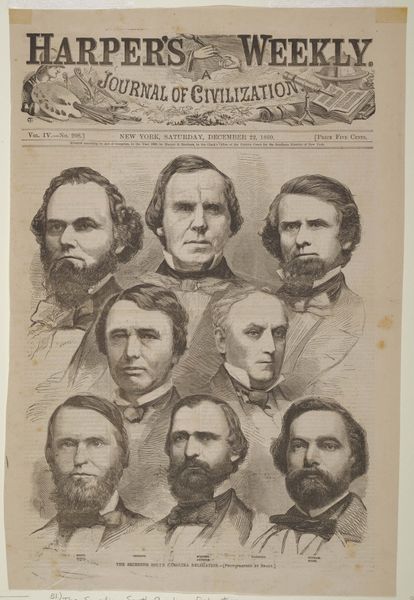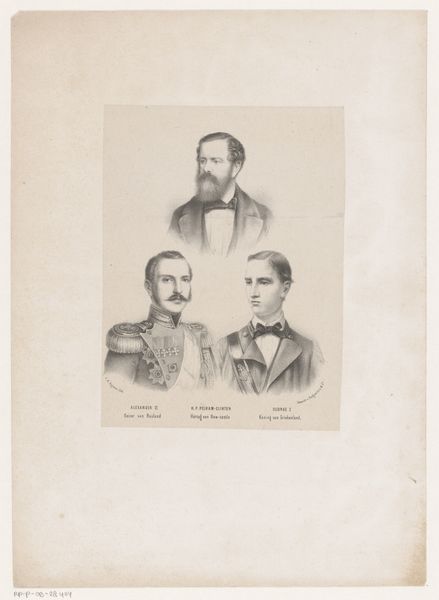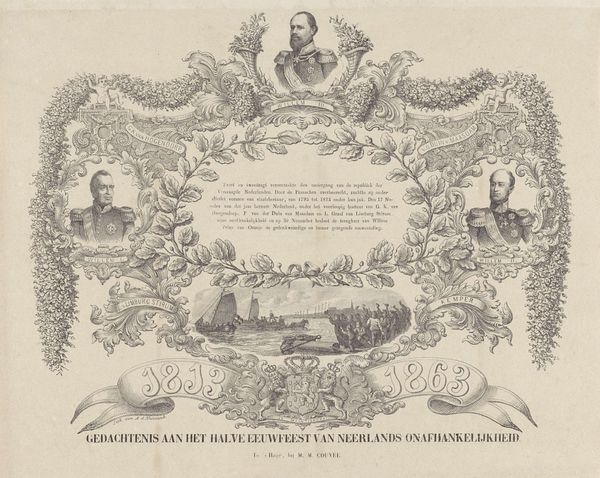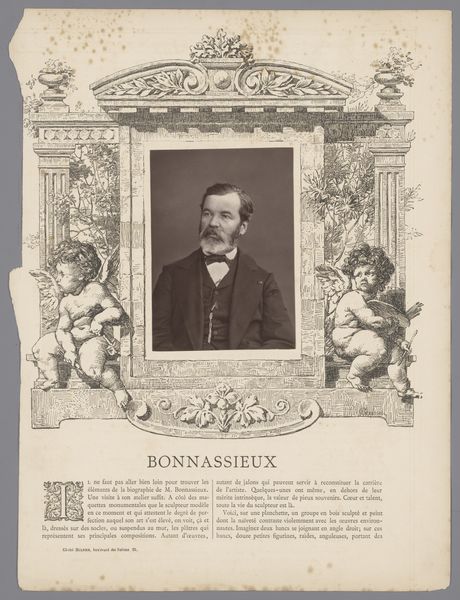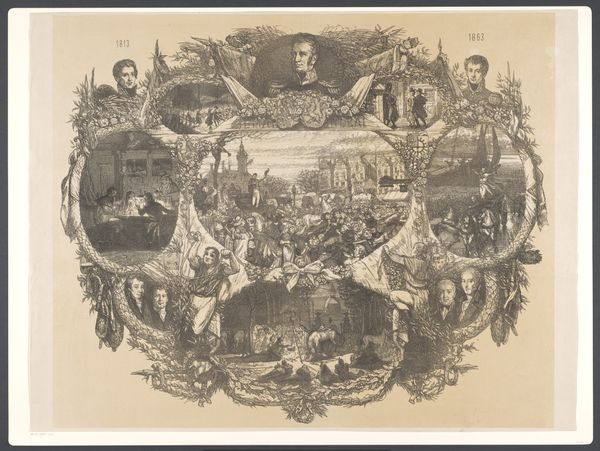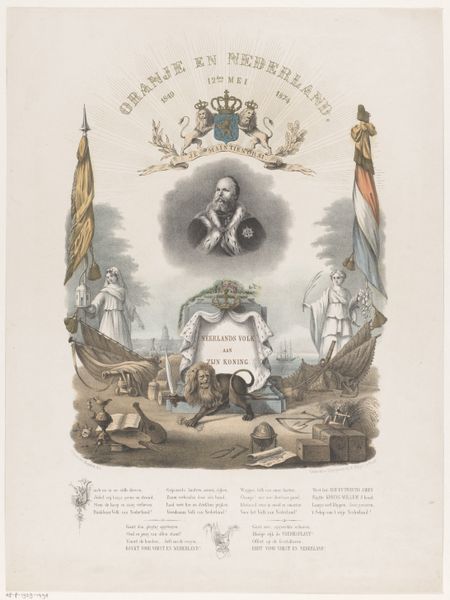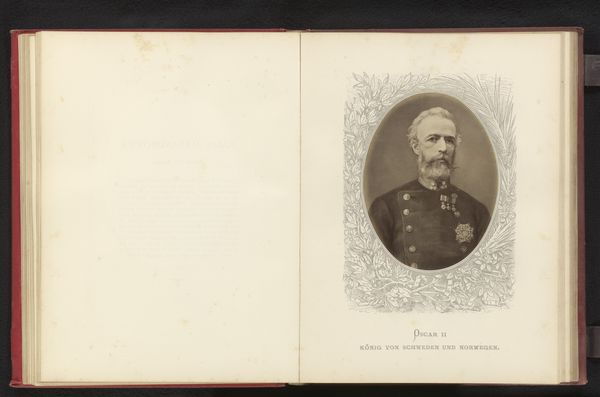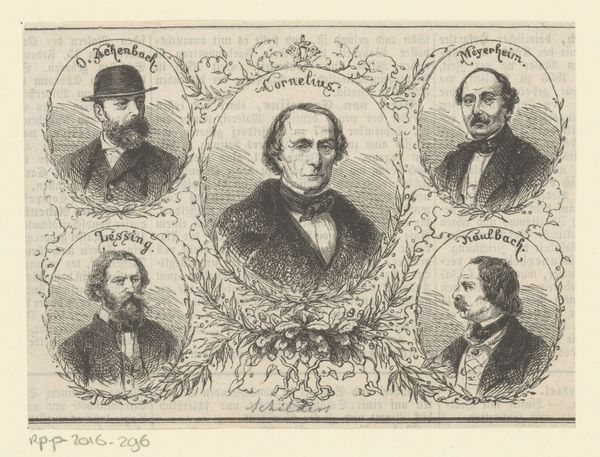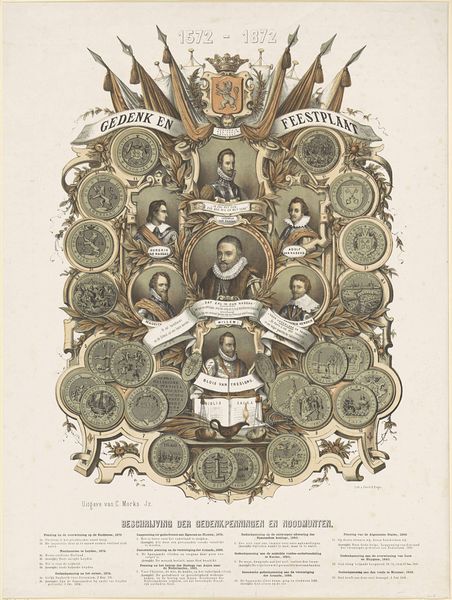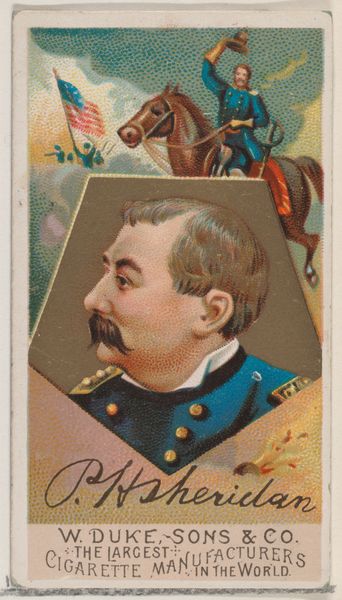
Copyright: Public domain
Curator: Here we have “Democratic presidential ticket”, a lithograph print made in 1864 by Currier and Ives. Editor: The first thing I notice is how incredibly stagey it feels. There's this sense of artificiality, almost like a political advertisement…wait, that’s exactly what it is! Curator: Precisely! It depicts George McClellan and George Pendleton, the Democratic candidates in the 1864 election, framed by draped curtains and patriotic symbols. Note how McClellan, in military uniform, and Pendleton are shaking hands. Consider the imagery chosen—a peace offering of sorts, meant to project unity during a fractured time in America. Editor: Yes, but the mechanics of its production are also telling. Lithography allowed for mass production, right? These weren't unique artworks but propaganda tools, disseminated widely to influence public opinion. Look at how the figures are rendered—almost cartoonish. It sacrifices detail for immediate visual impact, aiming to persuade, not to delve into nuanced portraiture. Curator: That's true. Symbolism dominates here. The eagle at the top represents American strength, while the cornucopias at the bottom overflow with fruits, signifying prosperity. It is almost overflowing with generic American symbols that work together to speak directly to what people at the time valued and understood. Editor: And the paper itself – it's got that characteristic aging, foxing, that tells its own story. These were cheaply made, meant to be discarded after the election, but some survived, becoming artifacts in their own right. They show us not just what the politicians *wanted* us to think, but what people were *consuming* as images, their visual diet, so to speak. Curator: It’s fascinating how this print encapsulates a specific moment in American history. It's not simply a record but a window into the hopes, fears, and persuasive tactics of the time. The symbolic weight of those clasped hands seems especially potent when one knows the ticket failed to achieve its ambition. Editor: Absolutely. Thinking about its production, its wide distribution, and its eventual survival makes you consider how material culture shapes our collective memory. Not just grand artworks in museums, but these ephemeral items—these discarded, political posters— that ultimately tell us so much.
Comments
No comments
Be the first to comment and join the conversation on the ultimate creative platform.
